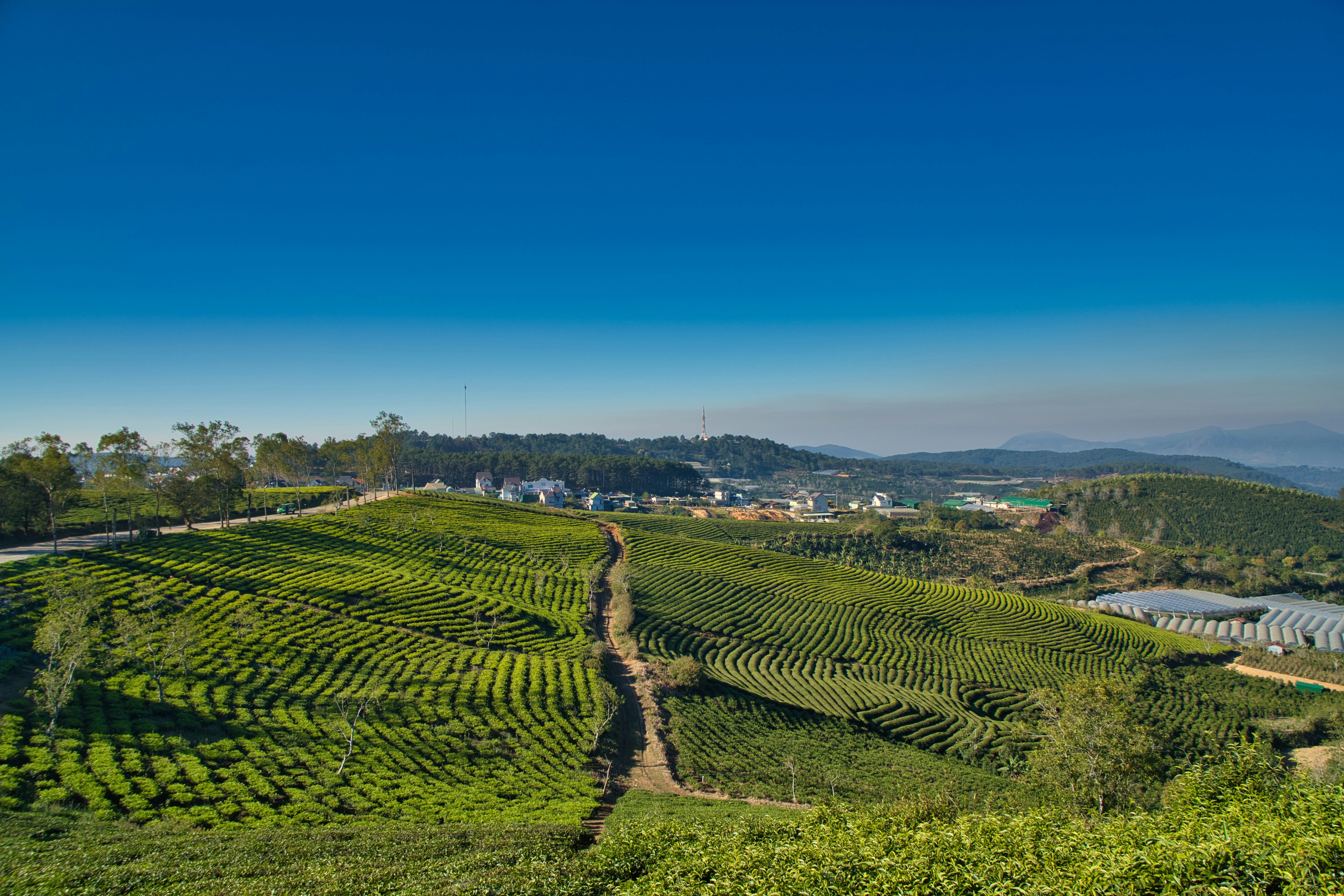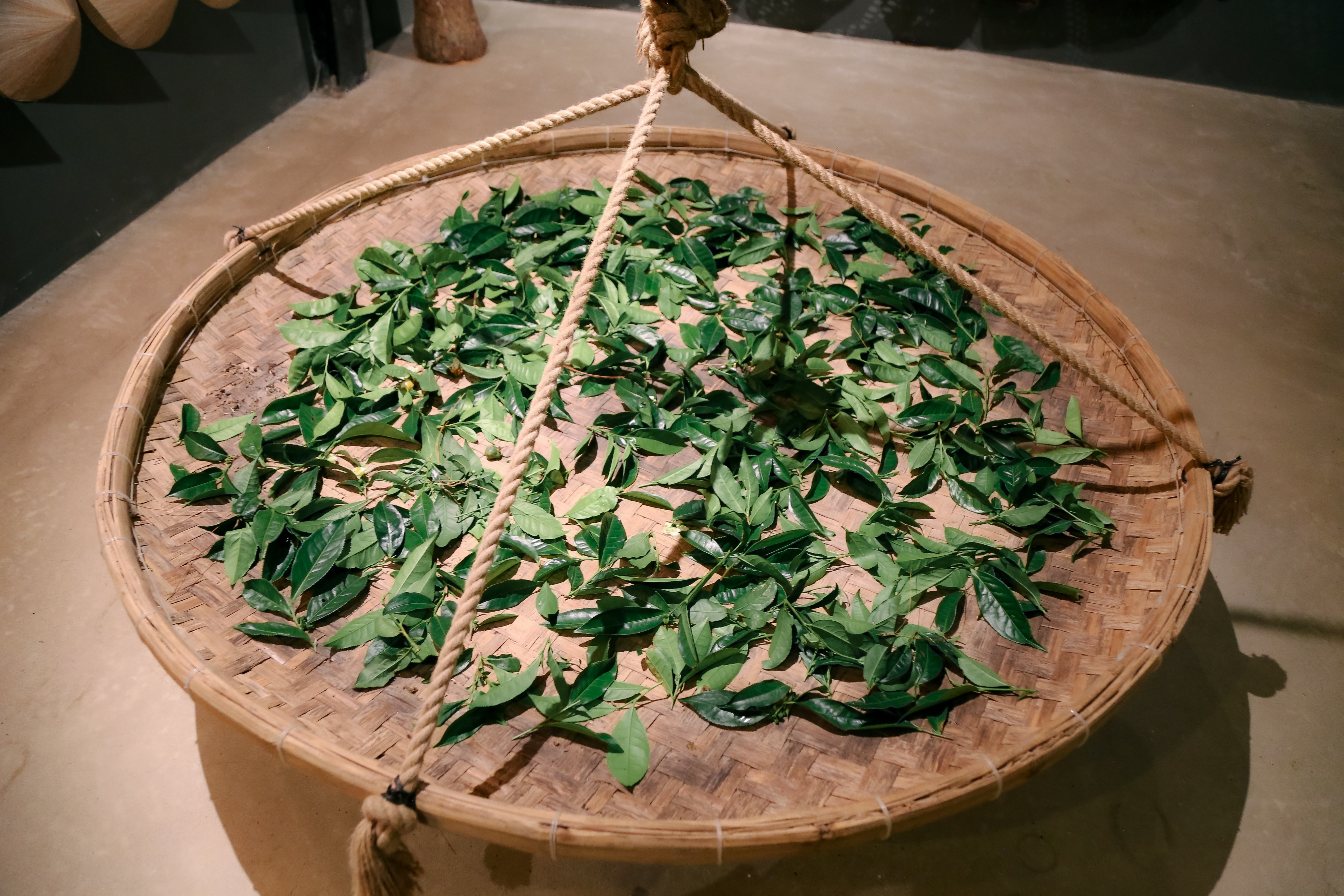When human hands transform the essence of earth and sky into flavor.
Amid the highlands of Da Lat — where the morning mist lingers and gentle sunlight spills over the hills — lies Cau Dat, a land intertwined with more than a century of tea cultivation and craftsmanship. Here, tea is not merely an agricultural product; it is a way of life, an art form, a symbol of culture, labor, and the enduring spirit of the Vietnamese people.
Many believe that making tea is simply about planting, picking, drying, and roasting. Yet, within every smallest step, artisans infuse their knowledge, emotions, and reverence for nature. That is why each cup of Cau Dat tea carries not only a delicate bitterness followed by a lingering sweetness, but also the scent of the earth, the breath of the mist, and the soul of those who craft it.
To truly understand the art of tea-making in Cau Dat, one must follow the journey — from the tender green leaf on the branch to the golden drop shimmering in the cup — a path where nature, craftsmanship, and culture are perfectly intertwined.

Cau Dat – The Land that Has Preserved the Soul of Vietnamese Tea for a Hundred Years
Perched at an altitude of over 1,650 meters above sea level, Cau Dat (Da Lat) enjoys a mild climate, fertile red basalt soil, and year-round mist — the perfect conditions for tea to flourish.
Since the early 20th century, the French recognized this potential and established the Cau Dat Tea Factory in 1927 — the oldest tea factory in Indochina that remains in operation today.
They brought tea varieties from Assam (India) and Sri Lanka, yet it was the hands and adaptability of the Vietnamese people that gave Cau Dat tea its distinctive character — gentle, refined, and elegant, much like the spirit of Da Lat itself.
Over the centuries, Cau Dat has become more than just a source of raw materials; it has evolved into the “tea culture capital” of Southern Vietnam, where every household is deeply intertwined with the tea plant as if it were part of their own lifeblood.
They don’t merely produce tea — they live with it.
And within that way of life, the art of tea-making has become the art of preserving culture.
The Handcrafted Process of Tea Making
The process of crafting Cau Dat tea, especially Oolong tea, is considered a delicate art form — one that requires precision, patience, and devotion through every step:
- Harvesting “One Bud, Two Leaves”
Tea pickers carefully handpick only the freshest young shoots — one tender bud and the two leaves just beneath it. This meticulous selection ensures consistent quality and preserves the finest flavor in every batch.
- Harvesting “One Bud, Two Leaves”
- Withering and Fermentation
Freshly plucked leaves are withered and fermented under strictly controlled conditions. This is the most crucial stage, where the tea’s signature aroma and complex flavor begin to take shape.
- Withering and Fermentation
- Rolling the Tea
By hand or using traditional machinery, the leaves are gently rolled to form tight curls, allowing the natural oils and essences within the leaves to be retained.
- Rolling the Tea
- Drying
After rolling, the tea is carefully dried — completing the transformation from tender green leaves into the fragrant, flavorful tea that carries the soul of Cau Dat.
- Drying

The Teacup – The Essence of Culture and Humanity
n Vietnamese culture, a cup of tea is more than just a drink — it is a symbol of connection, philosophy, and serenity. In Cau Dat, locals still begin their mornings with tea — a seemingly simple habit that carries profound cultural meaning.
Tea is a greeting at every meeting, a quiet pause in conversation, and a gesture of hospitality. For the tea makers of Cau Dat, tea is not merely a product — it is a way of life: to live slowly, to live gracefully, and to live with gratitude.
Each cup of tea holds more than fragrance and flavor — it holds time and emotion. It is a quiet form of luxury, one that modern life is slowly forgetting.

The Educational Value of the Art of Tea Making
For those in experiential education, the art of tea making in Cau Dat is a living lesson that weaves together biology, chemistry, culture, life skills, and humanistic thinking.
Recently, HaiAu Educursions organized the program “Agri Telling – A Century of Vietnamese Tea” for students from the Vietnam Australia International School at the Long Dinh Tea Museum. The students didn’t just observe — they experienced firsthand: picking tea leaves, roasting tea, savoring the brew, and retelling the stories of the tea artisans through their own creative perspectives.
The program imparted valuable lessons to every student:
- Learning from Nature: Understanding how soil, water, and climate shape flavor.
- Learning from Labor: Appreciating the values of meticulousness, patience, and responsibility.
- Learning from Culture: Recognizing that within every cup of tea lies a part of the nation’s soul.

Agri Telling doesn’t just teach children how to make tea — it teaches them to see the world with gratitude and to feel it with their hearts.
For more than a century, Cau Dat has kept the flame of tea alive — a flame fueled by passion, precision, and loyalty to nature. Every leaf picked, every cup poured, carries the memory of the land and a message for generations to come:
That true refinement does not come from luxury, but from devotion and time.
In this age of industrialization, as people search for balance and a sense of identity, the art of tea making in Cau Dat serves as a gentle reminder: to slow down, to cherish simplicity, and to listen to the whispers of nature in every drop of tea.
Don’t forget to follow the upcoming journeys of HaiAu Educursions — where every experience is a story of learning, gratitude, and connection.
